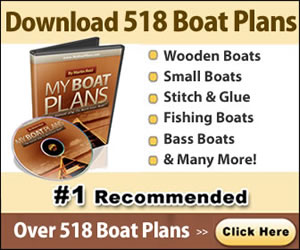

 simpleplansboat.blogspot.com
simpleplansboat.blogspot.com Opening: Building Your Own Inboard Boat Building your own inboard boat is a significant undertaking, requiring time, skill, and dedication. However, the reward of piloting a vessel you crafted yourself is immense. This guide provides a step-by-step approach to constructing your own inboard boat, from selecting plans to launching your finished creation. Remember safety and precision are key throughout the entire build.
Step 1: Selecting Your Boat Plans The first crucial step is choosing the right set of plans. There are hundreds of inboard boat plans available, ranging in size, design, and complexity. Consider these factors:
- Skill Level: Be realistic about your woodworking and mechanical abilities. Start with a simpler design if you're a beginner.
- Intended Use: Will the boat be used for fishing, watersports, cruising, or racing? This will influence the hull shape and features.
- Budget: Plans vary in price, and the cost of materials can add up quickly. Factor in all potential expenses.
- Size: Consider storage space, towing capacity, and the number of people you plan to accommodate.
- Material: Plywood, fiberglass, or wood? Select a material you are comfortable working with and that suits your budget.
Step 2: Gathering Materials and Tools Once you have your plans, create a comprehensive list of materials. Purchase high-quality materials specified in the plans. Don't skimp on essential items like marine-grade plywood, epoxy resins, fasteners, and wiring. You'll also need a well-equipped workshop with the following tools:
- Measuring and Marking Tools: Tape measure, rulers, squares, compass, pencils
- Cutting Tools: Circular saw, jigsaw, hand saw, block plane, router
- Fastening Tools: Drill, screwdrivers, clamps, staple gun
- Sanding Tools: Orbital sander, sanding blocks, sandpaper (various grits)
- Mixing and Application Tools: Buckets, measuring cups, mixing sticks, brushes, rollers for epoxy and paint
- Safety Gear: Safety glasses, dust mask, gloves, ear protection
Step 3: Building the Hull The hull is the foundation of your boat. Follow the plans precisely when cutting and assembling the hull panels. Common construction methods include:
- Stitch and Glue: Panels are temporarily stitched together with wire or zip ties, then glued with epoxy.
- Frame Construction: Building a frame with ribs and stringers, then attaching the hull planking.
- Cold Molding: Layers of thin wood veneers are glued together over a mold.
Step 4: Installing the Internal Components After the hull is complete, you can begin installing the internal components:
- Engine: Select an appropriate inboard engine based on the plans and your intended use. Ensure proper alignment and mounting.
- Steering System: Install the rudder, steering linkage, and helm. Test the system thoroughly.
- Fuel System: Install the fuel tank, fuel lines, and fuel filter. Ensure there are no leaks.
- Electrical System: Wire the boat according to the plans, including lights, instruments, and batteries. Use marine-grade wiring and connectors.
- Plumbing: Install bilge pumps, through-hull fittings, and water tanks (if applicable).
Step 5: Finishing and Painting Once all the internal components are installed, it's time to finish and paint the boat.
- Sanding: Thoroughly sand the entire boat to create a smooth surface for painting.
- Priming: Apply a marine-grade primer to protect the wood and provide a good base for the paint.
- Painting: Apply multiple coats of marine-grade paint, following the manufacturer's instructions.
- Varnishing (if applicable): Apply varnish to any exposed wood surfaces for protection and aesthetics.
Step 6: Launching and Testing The final step is launching your boat. Before launching, thoroughly inspect all systems to ensure they are working properly. Have all necessary safety equipment on board, including life jackets, flares, and a first-aid kit. Start the engine and check for any leaks or problems. Take the boat out for a test run in calm waters to ensure it handles properly. Make any necessary adjustments before venturing out further.
Conclusion: Enjoying Your Hand-Built Boat Building an inboard boat is a demanding but rewarding experience. By following these steps and paying attention to detail, you can create a vessel that you can be proud of. Remember to always prioritize safety and enjoy the fruits of your labor on the water.
Inboard And Outboard Boat Plans, Instant Download Access
 www.theclassicarchives.com
www.theclassicarchives.com Wooden Boat Plans Inboard
Wooden Boat Plans Inboard
 simpleplansboat.blogspot.com
simpleplansboat.blogspot.com

0 comments:
Post a Comment